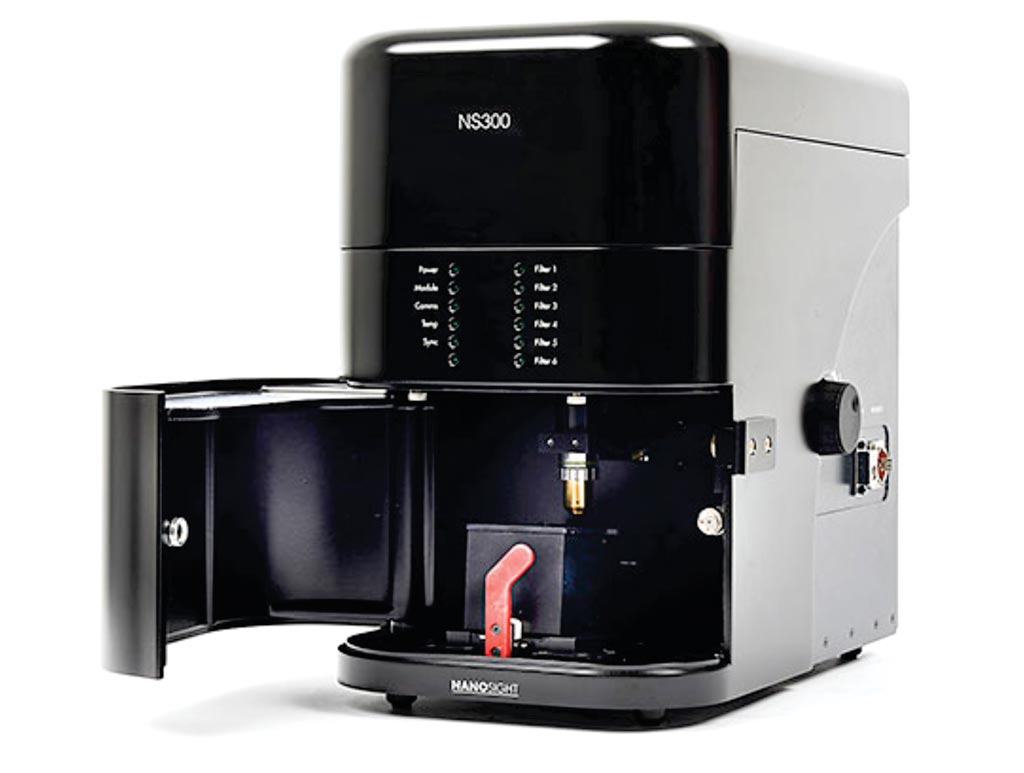Test Discovered for Earlier Detection of Transplant Rejection
By LabMedica International staff writers
Posted on 06 Apr 2017
A method has been discovered that appears to provide earlier warning of organ transplant rejection compared to standard methods, and requires only a blood test rather than a more invasive and painful needle biopsy.Posted on 06 Apr 2017
Approximately 30,000 organ transplants occur in the USA each year. However, depending on the organ type of the transplanted organs, between 20% and 50% fail within five years, most often because the recipient's immune system attacks, or "rejects," the donated organ.

Image: The NanoSight NS300 instrument provides an easy-to-use, reproducible platform for nanoparticle characterization (Photo courtesy of Malvern Instruments).
Scientists at the Perelman School of Medicine at the University of Pennsylvania analyzed human blood and urine samples using a new method. The new method involves tiny, capsule-like structures known as exosomes, which normally are secreted from most types of cell. Precisely what exosomes evolved to do is not clear, but scientists know that these capsules contain proteins and other molecules from their mother cell that can influence the activities of neighboring cells. Like their mother cells, exosomes have protein markers on their surfaces, often called major histocompatibility complex (MHC) antigens that identify them to the immune system as part of the body. Just as donor and host cells usually differ in their MHC markers, so do donor and host exosomes.
Human pancreas was processed for islet isolation, and high-purity (>80%) islets were used for xenoislet transplantation. Islet isolation was performed and the islets were cultured in CMRL media supplemented with albumin, without any exogenous exosome contamination. Islet culture supernatant (20 mL) was obtained 24 to72 hours after isolation for exosome analysis. Exosomes were isolated from human islet culture supernatants by size exclusion limit gel chromatography along with ultracentrifugation. Exosomes were analyzed on the NanoSight NS300 (405 nm laser diode) on the light scatter mode for quantification and scatter distribution.
In an initial exploration of the transplant-exosome strategy in people, the team examined stored blood plasma samples from five recipients of transplanted islet cells in a clinical trial, and was able to detect donor exosomes in these samples following the transplants. They also found some preliminary evidence that their falling-exosome measure could be useful in predicting transplant rejection in people. For one patient who experienced a rejection of the transplanted islet cells, a steep drop in the level of donor exosomes was detectable in a blood sample taken six and a half months before the transplanted cells stopped working and the patient developed clinical signs of diabetes.
The scientists showed that they could isolate and detect donor-tissue exosomes in a different type of transplant: kidney transplant, currently the most common type of organ transplant. In this case, the team found that they could isolate and quantify donor-kidney exosomes not just in blood but also in urine, thus potentially enabling urine tests which are even less invasive than blood tests. Ali Naji, MD, PhD, a Professor of Surgery and senior author of the study said, “I believe that analyses of exosomes from transplanted organs will ultimately provide a very powerful and unprecedented ability to understand the conditional state of the organ as a whole.” The study was published on March 20, 2017, in the Journal of Clinical Investigation.














